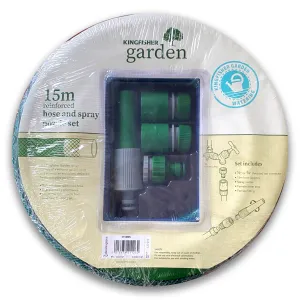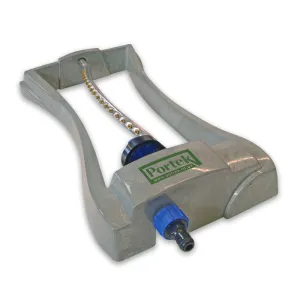If there’s one thing you can be certain about when it comes to the weather in Britain, it’s that nothing is certain. Summers can be wet, cold, scorching, dry, windy, and sometimes all of the above in one day.
The challenge arises when we’re in a period of stable dry weather. Many of us won’t think about watering our lawns until the grass starts to turn a little yellow. But hosepipe bans notwithstanding, all lawns benefit from water in summer months.
So how often should you be watering?
If you’re watering an established lawn, the key is to water deeply but not too often. Just wetting the lawn with a hose or sprinkler won’t go anywhere near its moisture needs in summer, but it’s often tricky to know how long to stand there or keep the sprinkler on.
Lawn specialists have various tricks they use to know when to stop watering. One of the easiest is to place a few clean tuna cans (or similar sized receptacles) around the lawn. When they are full, you’ve watered enough for that day.
This technique works because you’re trying to deliver about 1-2 inches of water to your entire lawn to ensure it reaches the roots – the average depth of a tuna can!
If you don’t deliver enough water to penetrate the roots, you run the risk of stressing the grass by restricting root growth. This can allow weeds and disease to get a hold.
Give your lawn a water like this once a week in extended periods of dry weather and aim to do it later in the afternoon or early evening to avoid water evaporation.
What about on newly seeded lawns?
The most important thing to remember about watering newly sown seeds is that they need more frequent watering, but not as deep watering as an established lawn.
Assuming you have prepared the ground well and sown seed onto moist soil, you will need to water at least once a day - especially when the weather is warm and dry – but you are aiming to keep the soil moist rather than soak it.
Use a fine spray on your hose gun or sprinkler to avoid moving the seed too much, and don’t create pools that will prevent the seed from germinating.
Once your lawn is fully established, you could consider using a wetting agent to help any water penetrate the soil, further benefitting the grass.
We have a wealth of information available to help you sow, grow, and maintain a high quality, healthy lawn. Take a look at our lawn guides here.






